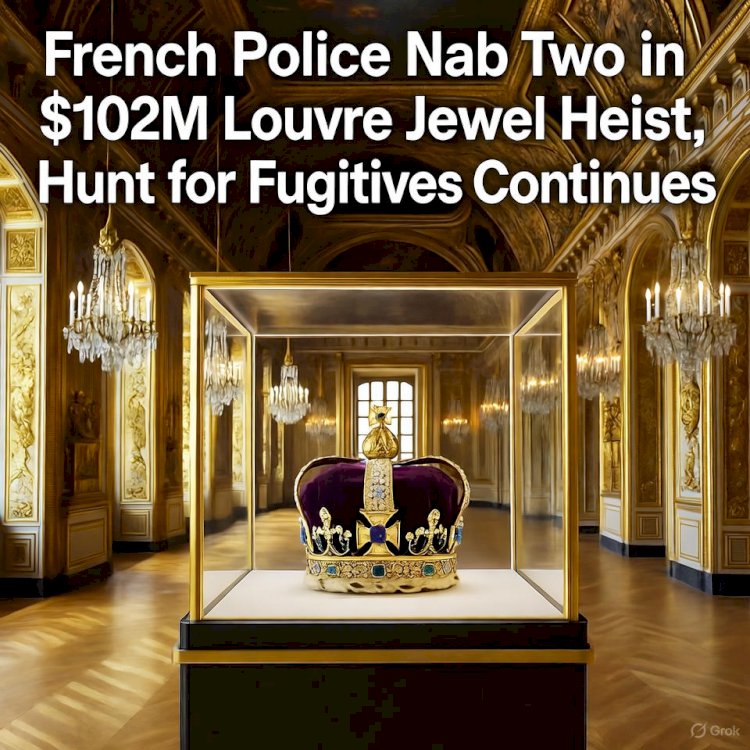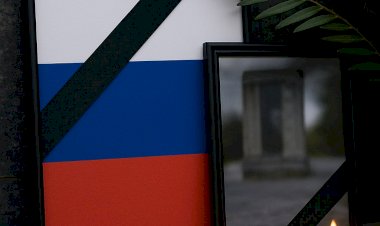Breakthrough in Paris: Suspects Nabbed in Daring Louvre Jewel Heist

Paris, France – In a swift turn of events that has investigators and art lovers breathing a collective sigh of relief, French authorities arrested two key suspects linked to the audacious theft of priceless crown jewels from the Louvre Museum, just one week after the brazen daytime raid that stunned the world. The arrests, announced by Paris Prosecutor Laure Beccuau on Sunday, come as police continue a high-stakes manhunt for two remaining fugitives, with hopes pinned on recovering the €88 million ($102 million) in stolen artifacts.
The dramatic detentions unfolded late Saturday evening, capping a frenzied week of forensic work and CCTV analysis. One man, in his 30s and hailing from the Seine-Saint-Denis suburb north of Paris, was apprehended at Paris-Charles de Gaulle Airport around 10 p.m. local time, mere moments before boarding a flight to Algeria, according to reports from Le Parisien and Paris Match. A second suspect, also in his 30s and known to law enforcement, was taken into custody shortly afterward in the Paris region. Both individuals, described as having prior run-ins with police, face up to 96 hours of pre-charge detention under French law as interrogations intensify.
"This revelation can only hinder the investigative efforts," Beccuau cautioned in a statement, lamenting media leaks about the arrests that she said could jeopardize the broader probe. Over 100 investigators remain mobilized, poring over escape routes and international leads to track down the other two members of the four-man crew still at large. No stolen items have been recovered yet, but officials are optimistic, with Interior Minister Laurent Nuñez praising the team's "tireless" dedication.
The Heist: A Seven-Minute Masterclass in Mayhem
The robbery, which unfolded on October 19 in the opulent Galerie d'Apollon – home to France's remaining crown jewels – exposed glaring vulnerabilities at the world's most-visited museum. Four hooded thieves arrived in coordinated fashion: two on motorbikes for reconnaissance and two in a truck equipped with a mechanical lift, evoking scenes from a high-octane thriller. Scaling a first-floor balcony overlooking the River Seine, they shattered a window with power tools, stormed the gallery, and threatened guards into evacuating visitors amid blaring alarms.
In a mere seven minutes – a blink in the Louvre's 800-year history – the gang smashed two bulletproof display cases and fled with eight exquisite pieces once adorning French queens and empresses. Among the haul: diamond-encrusted tiaras, necklaces, and bodice bows from the collection of Empress Eugénie, consort to Napoleon III. The gallery, with its gilded frescoes and crystal chandeliers, was left in chaos as panicked crowds spilled into the streets, forcing a three-day closure and ticket refunds for stunned tourists.
President Emmanuel Macron decried the theft as "an attack on a heritage that we cherish because it is our history," vowing swift justice. Louvre Director Laurence des Cars echoed the sentiment, labeling it a "terrible failure" and calling for urgent security overhauls. The incident has amplified concerns raised earlier this year, when museum officials sought government aid for renovations under the €700-800 million "New Renaissance" project to fortify aging exhibition halls.
Echoes of a Criminal Wave
This Louvre caper is the latest in a string of audacious museum thefts rippling across Europe, raising alarms about the vulnerability of cultural treasures. Just 24 hours after the Paris heist, a museum in eastern France reported a smashed display case and missing gold and silver coins. In July, Dutch prosecutors wrapped up a probe into a similar coin heist, convicting three men who melted down artifacts for profit. And in September, a young woman was nabbed in Barcelona for swiping gold nuggets from Paris's Museum of Natural History.
Experts speculate the Louvre jewels – too recognizable for quick fences – might be stashed for ransom, dismantled for gems, or funneled through black-market networks in North Africa or the Middle East, given the suspects' alleged ties. "These aren't your garden-variety smash-and-grabs; this was professional, almost surgical," noted criminologist Dr. Elise Moreau of the Sorbonne, who has tracked art crime for decades. "Recovery odds improve with arrests, but the trail could go cold fast."
A Nation on Edge, Eyes on Recovery
As Paris buzzes with speculation, the Louvre has taken no chances: its most precious jewels have been relocated to the fortified vaults of the Bank of France for safekeeping. The museum reopened on October 22 to subdued crowds, with the Apollo Gallery cordoned off behind metal gates – a stark reminder of the heist's shadow over one of humanity's greatest repositories of art.
Beccuau promised more details once the detention period lapses, but for now, the focus is laser-sharp on the fugitives. "We will leave no stone unturned," she affirmed, channeling the resolve that turned the City of Light's darkest hour into a beacon of determination. In a nation where history is etched in every cobblestone, the quest to reclaim these glittering symbols of empire feels less like a police procedural and more like a saga for the ages.

 content-team
content-team 


















